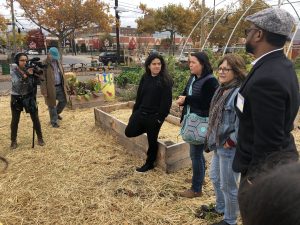24 Activity 5.6 – How to get involved
Audrey Ricke

Associated Readings:
- Chapter 3. Thomas W. Pearson and Daniel Renfrew. “When Toxic Heritage is Forever: Confronting PFAS Contamination and Toxicity as Lived Experience.“
- Chapter 16. Ana Isabel Baptista. “Environmental Justice Tours: Transformative Narratives of Struggle, Solidarity, and Activism.”
Targeted Skills:
Research, Communication, Analysis
Directions:
In the associated readings, as well as in other contributions in Toxic Heritage, organizations advocate for mitigation of environmental harm and justice for affected communities. What organizations or groups, similar to Concerned Citizens for Responsible Remediation (CCRR) and the Ironbound Community Corporation, exist in your area? Do some research in your city, region, state, or territory to find out if there are any similar groups that focus on environmental justice and related issues. Look for citizen scientists, volunteer groups, NGO’s, etc.
- Compile a list of such groups in your area, including websites and how a person could get involved (contact info, times and places of meetings, etc).
- Look over their websites and information, do the organizations deploy heritage practices to raise awareness of the issues or frame toxicity as toxic heritage? If so, how?
- Hint: go back and review the definition of toxic heritage to see what would fit under this label.
Next steps:
Option 1:
Share your findings with your peers or learning group. Consider attending one of these events and volunteering. What are some other places or means by which you could share your resource list to a broader audience (eg. student activities or community engagement website at your school or university)? Consider sharing your list with others outside your learning group.
Option 2:
What does it take to start an organization like CCRR? Develop a manual to assist communities in your city or state/territory to get started.
- What might be some potential complications that would arise in creating organizations to address toxic heritage that may not be as prominent for forming organizations to address other forms of environmental damage?

